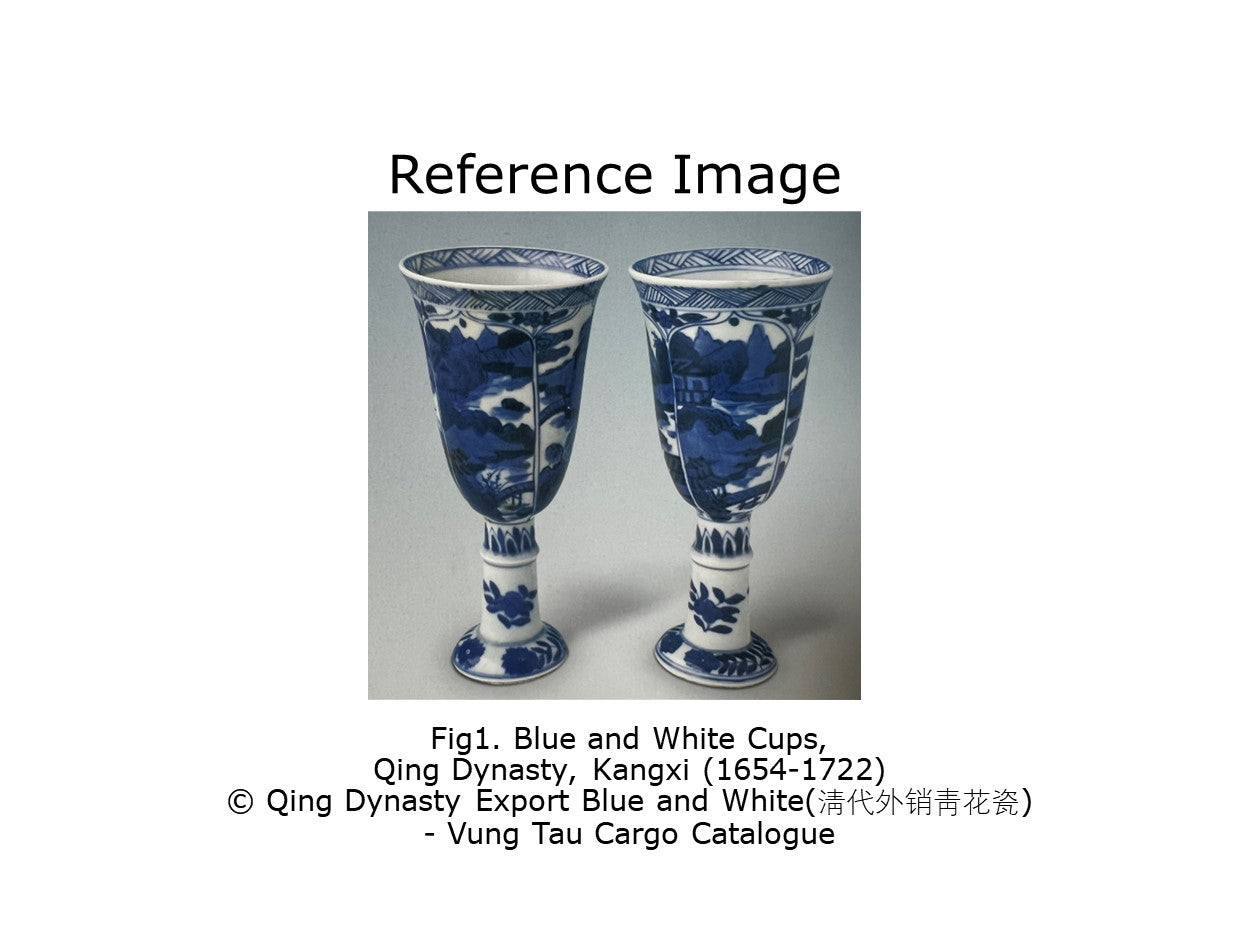BLUE AND WHITE STEMCUP, QING DYNASTY, KANGXI ERA, CIRCA 1690
BLUE AND WHITE STEMCUP, QING DYNASTY, KANGXI ERA, CIRCA 1690
Couldn't load pickup availability
(Source : Asian Civilisations Museum, Singapore)
Period : Qing Dynasty, Kangxi Period
Production Date : 1690-1699
Made in : Jingdezhen
Destination : Netherland
Found/Acquired : Southeast Asia , South China Sea, Vung Tau ship
Size : 17.5cm (Height) / 8cm(Diameter)
Condition : Excellent
Reference : Double checked with reference to the original catalogues
1) Christies Amsterdam 1992 - Vung Tau Cargo / Christies
2) Qing Dynasty Export Blue and White(淸代外销靑花瓷) - Vung Tau Cargo Catalogue / Guangxi Fine Art Publishing House
3) Asian Ceramic Found along Maritime Silk Route / National Maritime Museum of Korea
* Vung Tau Cargo Porcelain
The Vung Tau Cargo was found in the South China Sea off the islands of Con Dao about 100 nautical miles (185 km; 115 mi) from Vung Tau, Vietanam. The ship was of a lorcha boat—a vessel with Cantonese/Chinese and Portuguese/European influences that has been dated to about 1690. It was found by a fisherman who had picked up numerous pieces of porcelain from the ship while fishing. Sverker Hallstrom identified the ship and its cargo in 1990. Australian diver Michael Flecker took charge of the archaeological aspect of the excavation. An analysis of its cargo deduced that the ship was bound from China to Jakarta, Indonesia, where the porcelain would have been purchased by the Dutch East India Company for trans-shipment to Holland, Europe as a commercial trade goods.




















